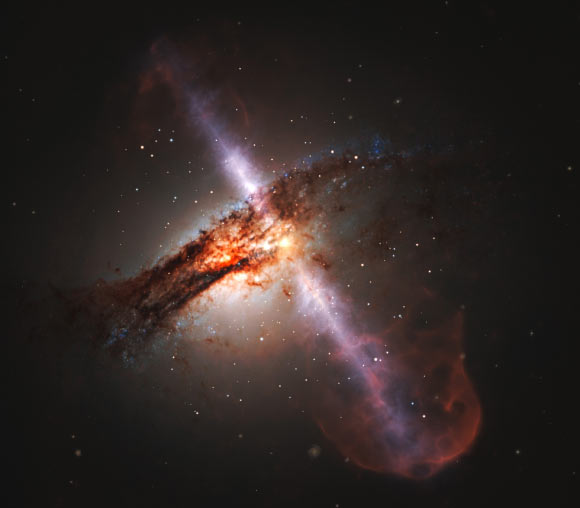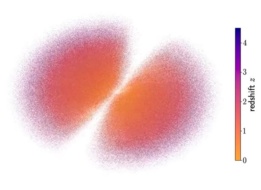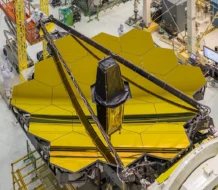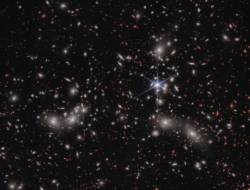Nearly every black hole in the universe has a black hole at its center, providing the axis around which the galaxy stars and gas and dust rotate.
Less frequently, astronomers come across a black hole that shoots relativistic jets of material from its poles at the speed of light.
Even less frequently, these active black holes fall into a rare category of Compact Symmetric Objects (CSOs), which do shoot material from their poles with great force, but, for whatever reason, those jets don’t extend vast distances into the void of space. They instead remain much more tightly bound to the black hole.
For a long time, researchers assumed that the shorter extension meant that the black holes were just younger—but that may not be the case. In a series of three studies published this week in The Astrophysical Journal, Caltech researchers whittled down a pool of thousands of potential CSOs to a few dozen they consider a truly new category of celestial objects with a short overall lifespan.
A tidal disruption: The jets that shoot from the CSOs, the research team reports, come from black holes gobbling up stars of very large mass or size that come too close.
“We think that a single star gets ripped apart, and then all that energy is channeled into jets along the axis the black hole is spinning around,” said Tony Readhead, who led the investigation, in a release. “The giant black hole starts out invisible to us, and then when it consumes a star, boom! The black hole has fuel, and we can see it.”
This ripping-apart of a large star by a black hole is called a tidal disruption event (TDE). In the case of CSOs, it creates jets that extend ~1,500 light-years out into space and last for ~5,000 years. That’s a lot shorter and smaller than other observed black holes with jets, like the one at the center of Cygnus A, which extends ~230,000 light years above and below and has been burning for millions of years.
Short and snappy: The short lifetimes of CSOs are a useful trait for astronomers looking to understand the full life cycles of these objects. By observing the set of 64 confirmed over the course of this study, the team hopes to gain a holistic view of how CSOs form, evolve, behave, and eventually die.




